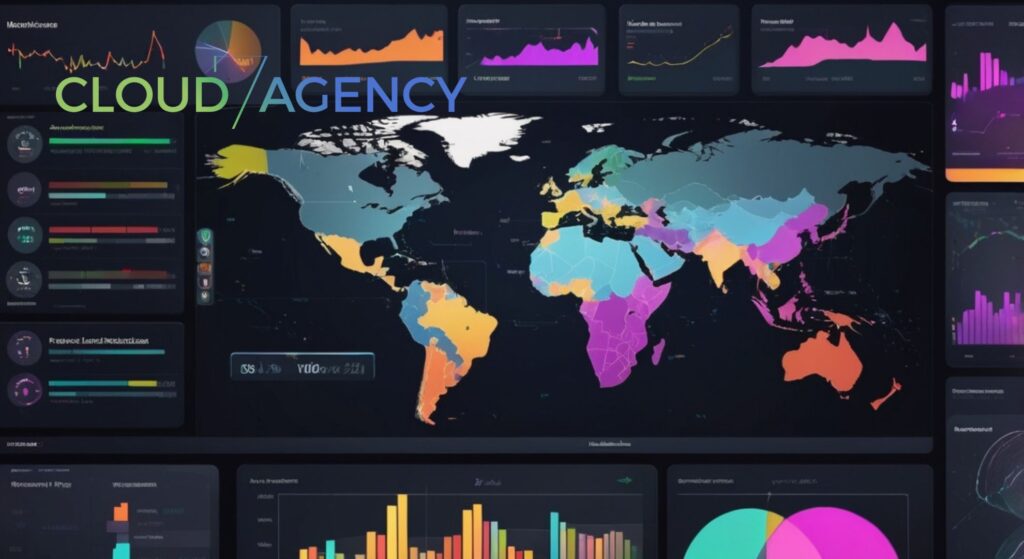In today’s interconnected digital landscape, businesses expanding across international markets face unique challenges when it comes to website performance and technical optimization. Cross-border technical website analysis has become a critical component of successful global digital marketing strategies, requiring specialized expertise to navigate the complex web of regional requirements, cultural considerations, and technical standards that vary from market to market.
The process of conducting international technical analysis extends far beyond traditional website audits, encompassing everything from server location optimization and content delivery network (CDN) configuration to compliance with regional data protection regulations and local search engine preferences. Organizations must understand that what works perfectly in their domestic market may fall short when deployed across different geographical regions, making comprehensive technical analysis an essential investment for sustainable international growth.
Modern businesses operating in multiple countries must contend with varying internet infrastructure capabilities, different mobile device preferences, diverse payment gateway requirements, and distinct user behavior patterns that directly impact website performance metrics. A website technical audit designed for international markets requires deep understanding of these regional nuances, combined with advanced analytical tools capable of measuring performance from multiple global vantage points simultaneously.
The stakes for getting cross-border technical optimization right have never been higher. Search engines increasingly prioritize user experience signals in their ranking algorithms, while consumers across all markets have developed heightened expectations for fast, seamless digital experiences. Websites that fail to meet these technical standards risk not only poor search engine visibility but also significant revenue losses due to high bounce rates and abandoned conversion funnels.
Furthermore, the regulatory landscape surrounding international websites continues to evolve rapidly, with new data privacy laws, accessibility requirements, and technical standards emerging regularly across different jurisdictions. Organizations must stay ahead of these changes through proactive technical analysis and optimization strategies that ensure compliance while maintaining optimal performance across all target markets.
Key Takeaways
Regional Performance Variations: Website performance can vary dramatically across different geographical regions due to infrastructure differences, requiring location-specific optimization strategies and comprehensive monitoring from multiple global testing points.
Compliance Complexity: International websites must navigate a complex web of regional regulations including GDPR, CCPA, accessibility standards, and local data protection laws, making compliance auditing a critical component of technical analysis.
CDN Strategy Importance: Content delivery network configuration plays a crucial role in international website performance, requiring careful analysis of edge server locations, caching strategies, and regional content optimization to ensure consistent user experiences globally.
Mobile-First Considerations: Different regions exhibit varying mobile device preferences and network capabilities, necessitating responsive design optimization and performance testing across diverse device and connection scenarios.
Search Engine Diversity: While Google dominates many markets, regions like China, Russia, and South Korea have preferred search engines with unique technical requirements that must be addressed in international technical audits.
Currency and Payment Integration: Technical analysis must include evaluation of payment gateway performance, currency conversion accuracy, and regional payment method preferences to optimize conversion rates across different markets.
Language and Character Encoding: Proper implementation of multilingual support, character encoding standards, and right-to-left language compatibility requires specialized technical analysis to prevent display issues and search engine indexing problems.
Local Hosting Considerations: Some regions require or strongly prefer locally hosted websites for optimal performance and regulatory compliance, impacting server infrastructure decisions and technical architecture planning.
Understanding Cross-Border Technical Analysis Fundamentals
Cross-border technical analysis represents a sophisticated approach to website evaluation that considers the multifaceted challenges of operating across international markets. Unlike domestic technical audits that focus primarily on single-market optimization, international analysis requires a comprehensive understanding of how technical elements perform across diverse geographical, cultural, and regulatory environments.

The foundation of effective international technical analysis lies in establishing baseline performance metrics from multiple global locations. This involves deploying monitoring tools and testing protocols that can accurately simulate user experiences across different continents, internet service providers, and device configurations. Organizations must recognize that a website loading quickly from their headquarters location may experience significant performance degradation when accessed from target international markets.
Server response times, content delivery efficiency, and third-party service integrations all behave differently across international boundaries. Network latency, routing inefficiencies, and regional internet infrastructure limitations can dramatically impact user experience metrics, making it essential to conduct technical analysis from the perspective of actual international users rather than relying solely on domestic testing results.
Modern international technical analysis also encompasses evaluation of website architecture scalability to handle varying traffic patterns across different time zones and seasonal behaviors unique to specific regions. This includes assessing database performance under international load conditions, evaluating content management system efficiency for multilingual content delivery, and analyzing the technical infrastructure’s ability to support region-specific features and functionality requirements.
Organizations conducting comprehensive international technical analysis often benefit from implementing international technical audit frameworks that provide systematic evaluation methodologies specifically designed for global website operations.
Advanced Website Technical Audit Methodologies for Global Markets
Implementing comprehensive website technical audit procedures for international markets requires sophisticated methodologies that go beyond standard performance testing. Advanced audit frameworks must incorporate multi-regional testing protocols, compliance verification systems, and cultural adaptation assessments to ensure websites meet the diverse requirements of global audiences.
The technical audit process begins with establishing a comprehensive baseline through simultaneous testing from multiple geographical locations. This involves deploying synthetic monitoring tools configured to simulate real user conditions across target markets, including varying connection speeds, device types, and browser preferences common to specific regions. Advanced audit methodologies also incorporate real user monitoring data to validate synthetic testing results and identify performance issues that may only manifest under actual usage conditions.
Security assessment forms a critical component of international technical audits, as different regions maintain varying cybersecurity standards and threat landscapes. Audit procedures must evaluate SSL certificate validity across different certificate authorities, assess data encryption standards compliance with regional requirements, and verify that security headers and protocols meet the most stringent standards among all target markets.
Modern audit methodologies also incorporate automated accessibility testing calibrated to meet international accessibility standards, including WCAG compliance verification and region-specific accessibility requirements. This includes evaluating keyboard navigation functionality across different language layouts, screen reader compatibility with multilingual content, and color contrast compliance that considers cultural color perception differences.
Advanced technical audits must also assess the website’s technical SEO implementation across different search engines and regional preferences. This involves evaluating hreflang implementation accuracy, international URL structure optimization, and metadata compliance with various search engine guidelines beyond Google, including Baidu, Yandex, and Naver technical requirements.
IMAGE PROMPT: A professional analyst working at multiple computer screens showing technical audit reports, code analysis tools, and website testing interfaces, with global connectivity visualizations in the background, bright office lighting with technology-focused environment
Regional Compliance and Regulatory Considerations
Navigating the complex landscape of international regulatory compliance represents one of the most challenging aspects of cross-border technical website optimization. Each region maintains distinct legal frameworks governing data protection, accessibility standards, consumer rights, and digital commerce regulations that directly impact website technical implementation and ongoing maintenance requirements.

The European Union’s General Data Protection Regulation (GDPR) has established a global benchmark for data privacy compliance, requiring sophisticated technical implementations including consent management systems, data processing transparency mechanisms, and user rights fulfillment capabilities. However, organizations must recognize that GDPR compliance alone is insufficient for global operations, as regions like California (CCPA), Brazil (LGPD), and China (PIPL) maintain distinct requirements that may conflict with or extend beyond European standards.
Technical implementation of compliance frameworks requires careful consideration of data flow architectures, cookie management systems, and user consent interfaces that can adapt to regional requirements while maintaining consistent user experiences. This includes implementing geolocation-based compliance triggers, developing region-specific privacy policy delivery systems, and establishing technical infrastructure capable of fulfilling user rights requests across different jurisdictional frameworks.
Accessibility compliance presents another layer of technical complexity, as different regions maintain varying standards and enforcement mechanisms. While WCAG 2.1 provides international guidelines, countries like the United States (ADA), European Union (EN 301 549), and Canada (AODA) maintain specific implementation requirements that must be addressed through technical analysis and optimization strategies.
E-commerce regulations add additional technical considerations, including tax calculation accuracy across different jurisdictions, currency conversion compliance, pricing transparency requirements, and consumer protection implementations that vary significantly between regions. Organizations must ensure their technical infrastructure can support these diverse requirements while maintaining optimal performance and user experience standards.
Comprehensive global SEO compliance strategies help organizations navigate these complex regulatory requirements while maintaining search optimization effectiveness across international markets.
Performance Optimization Strategies for Multi-Regional Websites
Developing effective performance optimization strategies for multi-regional websites requires a nuanced understanding of how technical elements interact with diverse geographical and infrastructure conditions. Organizations must move beyond one-size-fits-all approaches to implement sophisticated optimization frameworks that account for regional variations in internet infrastructure, device preferences, and user behavior patterns.
Content Delivery Network (CDN) optimization forms the cornerstone of international performance strategies, requiring careful analysis of edge server locations, caching policies, and content distribution algorithms. Advanced CDN implementations must consider not only geographical proximity but also network topology, regional internet service provider relationships, and local content regulations that may impact caching strategies. Organizations should implement dynamic CDN selection algorithms that can adapt to real-time network conditions and route traffic through optimal paths based on current performance metrics.
Image and media optimization strategies must account for varying bandwidth capabilities and device preferences across different regions. This includes implementing adaptive image delivery systems that can automatically adjust quality and format based on detected connection speeds and device capabilities. Advanced optimization techniques include region-specific image format preferences, such as WebP adoption rates, and mobile-first optimization strategies tailored to predominant device types in specific markets.
Database and server infrastructure optimization requires careful consideration of data locality requirements and latency minimization strategies. This may involve implementing distributed database architectures, regional data replication systems, and edge computing solutions that can process user requests closer to their geographical locations. Organizations must balance performance optimization with data sovereignty requirements and regulatory compliance obligations that may restrict data processing locations.
Third-party service integration optimization represents another critical performance consideration, as external services may exhibit varying performance characteristics across different regions. This includes evaluating analytics platform performance, payment gateway response times, and social media integration efficiency from multiple geographical perspectives to ensure consistent user experiences regardless of location.
Technical Infrastructure and Architecture Planning
Establishing robust technical infrastructure capable of supporting international operations requires comprehensive architecture planning that anticipates the complex requirements of multi-regional website deployment. Organizations must design scalable systems that can accommodate varying traffic patterns, regulatory requirements, and performance expectations while maintaining cost-effectiveness and operational efficiency.

Server infrastructure planning must consider the strategic placement of computing resources to optimize both performance and compliance requirements. This involves evaluating colocation facilities, cloud service provider regional availability, and hybrid infrastructure solutions that can provide optimal performance while meeting data sovereignty requirements. Advanced infrastructure planning also incorporates disaster recovery and business continuity strategies that account for regional risk factors and regulatory compliance obligations.
Database architecture decisions significantly impact international website performance and compliance capabilities. Organizations must evaluate distributed database solutions, regional data replication strategies, and data synchronization mechanisms that can maintain consistency while minimizing latency. This includes implementing sophisticated caching layers, read replica strategies, and data partitioning approaches that optimize performance for specific geographical regions.
Network architecture optimization requires careful consideration of traffic routing, load balancing, and failover mechanisms that can maintain optimal performance across diverse geographical conditions. This includes implementing intelligent DNS solutions, anycast routing strategies, and regional load balancing algorithms that can adapt to changing network conditions and traffic patterns.
Security architecture planning must address the varying threat landscapes and regulatory requirements across different regions. This involves implementing defense-in-depth strategies, regional security monitoring systems, and incident response capabilities that can address region-specific cybersecurity challenges while maintaining consistent security standards across all markets.
Organizations implementing comprehensive international technical optimization often benefit from integrating local website optimization strategies that address specific regional performance requirements while maintaining global architectural consistency.
At C7A, we understand the complexities of international technical infrastructure planning and provide specialized expertise to help organizations navigate these challenges effectively. Our comprehensive approach ensures that technical architecture decisions support both immediate performance requirements and long-term scalability objectives across diverse international markets.
Advanced Monitoring and Analytics Integration
International technical website analysis requires sophisticated monitoring and analytics frameworks that can provide comprehensive insights into performance variations, user behavior patterns, and technical issues across diverse geographical markets. Organizations must implement monitoring systems that can track performance metrics, security threats, and compliance status from multiple global vantage points while providing actionable insights for optimization decisions.
Real-time performance monitoring systems must be configured to assess website functionality from multiple international locations, providing insights into regional performance variations, connection quality impacts, and infrastructure bottlenecks that may not be apparent from domestic monitoring alone. These systems should include synthetic transaction monitoring, real user monitoring, and comprehensive uptime tracking that accounts for regional internet infrastructure reliability and performance characteristics.
Security monitoring frameworks for international websites must account for varying threat landscapes across different regions while maintaining comprehensive visibility into potential security incidents and compliance violations. This includes implementing region-specific threat intelligence feeds, monitoring for compliance violations across different regulatory frameworks, and maintaining incident response capabilities that can address security issues regardless of their geographical origin.
Frequently Asked Questions
What are the most critical technical factors to consider when expanding a website internationally?
The most critical factors include server location and CDN optimization, compliance with regional data protection regulations, multilingual technical implementation, payment gateway integration, and mobile optimization for regional device preferences. Each factor requires specialized analysis and optimization strategies.
How often should international websites undergo comprehensive technical audits?
International websites should undergo comprehensive technical audits quarterly, with continuous monitoring for performance and compliance issues. Regulatory changes, search engine algorithm updates, and evolving regional requirements necessitate more frequent auditing than domestic websites.
What tools are essential for conducting cross-border technical website analysis?
Essential tools include multi-regional performance monitoring platforms, compliance scanning solutions, international SEO analysis tools, security assessment frameworks, and accessibility testing suites. These tools must be configured to test from multiple geographical locations and account for regional variations.
How do regional search engine preferences impact technical optimization strategies?
Different regions prefer different search engines (Google, Baidu, Yandex, Naver), each with unique technical requirements for crawling, indexing, and ranking. Technical optimization must account for these variations in meta tag implementation, structured data formats, and site architecture preferences.
What are the biggest compliance challenges for international websites?
Major compliance challenges include navigating conflicting data protection regulations (GDPR, CCPA, PIPL), implementing region-specific accessibility standards, managing cross-border data transfer restrictions, and maintaining compliance with varying e-commerce regulations and tax requirements.
How does mobile optimization differ across international markets?
Mobile optimization varies significantly across regions due to different device preferences, network infrastructure capabilities, and user behavior patterns. Some regions prioritize feature phone compatibility, while others focus on high-end smartphone optimization, requiring tailored technical approaches.
What role does website hosting location play in international performance?
Hosting location significantly impacts website performance due to network latency, regional internet infrastructure, and data sovereignty requirements. Some regions require local hosting for optimal performance or regulatory compliance, while others benefit from strategic CDN implementation.
How can organizations ensure consistent user experience across different regions?
Consistent user experience requires comprehensive testing from multiple geographical locations, adaptive content delivery systems, region-specific optimization strategies, and continuous monitoring of performance metrics across all target markets. This includes implementing fallback mechanisms for regional service failures.
Conclusion
Cross-border technical website analysis and optimization represents a critical investment for organizations seeking sustainable international growth in today’s competitive digital landscape. The complexity of managing technical performance, regulatory compliance, and user experience optimization across diverse geographical markets requires specialized expertise and sophisticated analytical frameworks that go far beyond traditional website auditing approaches.
Success in international markets depends on understanding that technical optimization is not a one-time activity but an ongoing process that must adapt to evolving regulatory requirements, changing user expectations, and advancing technology standards across different regions. Organizations that invest in comprehensive international technical analysis position themselves to capture market opportunities while avoiding costly compliance issues and performance problems that can derail international expansion efforts.
The future of international digital marketing will increasingly depend on technical excellence that can deliver consistent, compliant, and optimized user experiences regardless of geographical location. Organizations that master these technical complexities will gain significant competitive advantages in global markets, while those that neglect international technical optimization risk losing market share to more technically sophisticated competitors.
As the digital landscape continues to evolve, the importance of professional expertise in cross-border technical analysis will only increase, making it essential for organizations to partner with specialists who understand the nuanced requirements of international website optimization and can navigate the complex technical challenges of global digital marketing success.

